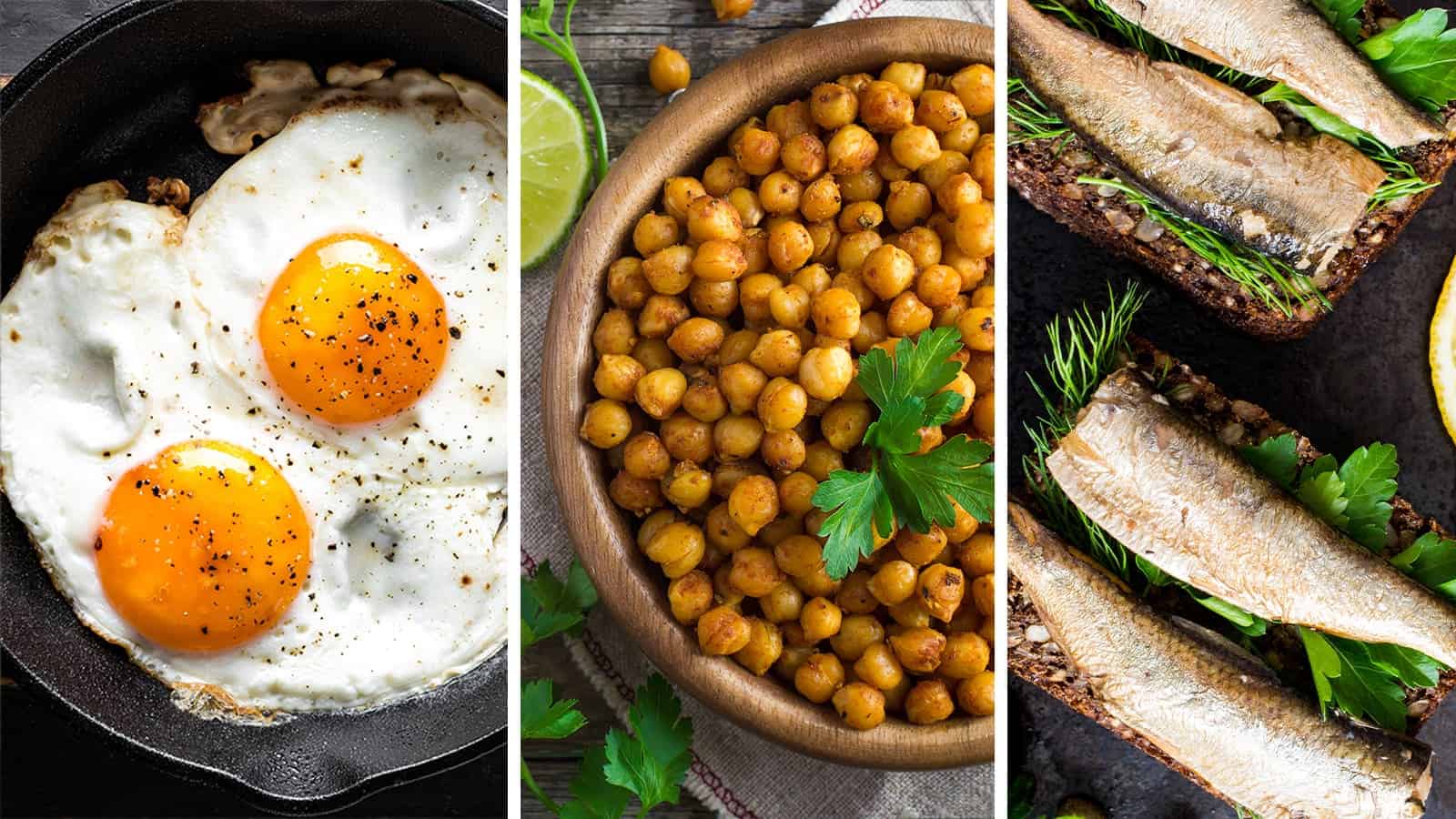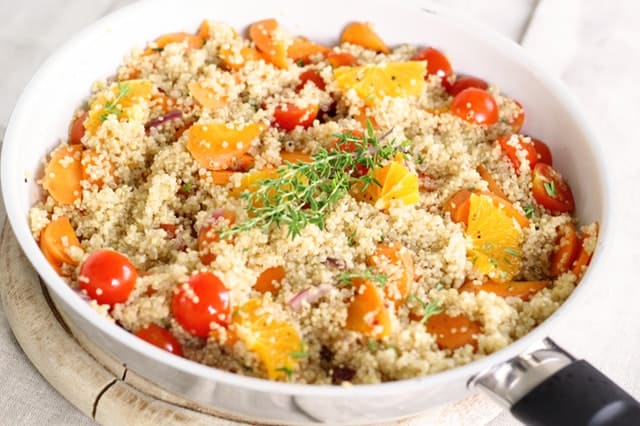Have you been considering changing your eating habits? From the Mediterranean Diet to low-carb options, you have many programs from which to choose.
Humans have dieted for almost 200 years. Today, the industry constitutes a $70-billion empire. As with any business, offering the illusion of choice is key to ensuring consumers remain interested. Therefore, we perpetually subscribe to the next fad. It seems like a new weight loss program emerges almost every other day. Of course, each one promises to answer all your health woes. While enticing, these trends often provide conflicting information that not only confuses the public but is also rarely evidence-based.
So what does science say the best diet is for overall health, longevity, and effortlessly maintaining a healthy weight? Unsurprisingly, it isn’t anything extreme like the claims purported by many popular fads. Researchers from Ben-Gurion University in Israel recently published a long-term study. In it, they reveal that people who follow a Mediterranean style of eating and engage in regular exercise had a significantly lowered risk of heart attack, stroke, and peripheral artery disease.
HISTORY OF DIETING
The practice of dieting dates back to 1724, when English doctor George Cheyne published An Essay of Health and Long Life. In this journal, he advised obese persons to exercise, ample fresh air, and avoid luxury foods to lose weight.
Soon after, in 1797, Scottish military surgeon John Rollo published Notes of a Diabetic Case. He recommended a meat-based diet for those suffering from diabetes. This though process emerged after it was discovered that elevated blood glucose causes the disease.
It wasn’t until 1863 that the first-ever official diet arose. Known as “Banting,” named after English mortician William Banting, the program involved eating four daily meals. Approved foods consisted of meat, greens, fruits, and dry wine. Banting stressed the importance of avoiding sugar, sweet foods, starch, beer, milk, and butter. This approach later became the template for modern dieting.
Calorie counting emerged in 1918, when American physician and columnist Lulu Hunt Peters wrote Diet and Health: With Key to the Calories. This was the first weight-loss book to promote tracking one’s energy intake and expenditure.
Ironically, as this industry emerged, the health-conscious Italian and Greek people consumed the Mediterranean Diet naturally.
HISTORY AND DRAWBACKS OF SEVERAL POPULAR MODERN DIETS VS. MEDITERRANEAN DIET
Weight Watchers
History:
Weight Watchers, now rebranded “Wellness Works,” was founded in the early 1960s by a woman named Jean Nidetch. She invited women to her Queens, New York home. There, they discussed the methodology behind successful weight loss.
Since then, the program arose as a multimillion-dollar empire. It attracts followers by showcasing drastic weight loss transformations achieved via sustainable lifestyle changes such as portion control and inclusion of fresh fruits and vegetables, lean meats, and whole grains.
Drawbacks:
-
- Weight Watchers assigns “SmartPoints” to foods, which participants tally up throughout the day. Each person receives a custom amount of points to strive for based weight, height, age, gender, activity level, and goal weight. Many healthful foods, including all produce, skinless chicken, nonfat yogurt, and beans, are “zero-point foods.” This term means they do not factor into a person’s daily allotment. However, these foods still contain calories. So allowing them in unlimited amounts may lead to overconsumption and a generally poor relationship with food.
- The plan permits all foods, so long as they fit into the participant’s daily point goal. For example, glazed donut clocks in at 10 SmartPoints. Theoretically, a person might eat only unhealthy foods and still lose weight while missing out on essential micronutrients.
Ketogenic Diet
History
The ketogenic diet, which is a high-fat, low-carbohydrate approach, was introduced by physicians in the 1920s as nutritional therapy for children with epilepsy because it mimics the body’s response to fasting. The body runs on fat rather than glucose when carbohydrates are restricted, producing compounds known as ketones which send anti-electrical signals to the brain.
The ketogenic diet, or “keto,” has seen a massive resurgence over the last 20 years among the general population. Its promising message of allowing stored body fat to burn in the absence of glucose has prompted millions to jump on the bandwagon.
Drawbacks
-
- While a large improvement from the Standard American Diet, keto definitely has its pitfalls. Firstly, it isn’t sustainable. Adhering to a very low carbohydrate diet for long periods of time takes more willpower than most people have, which often leads to overconsumption of “off-limits” foods and regain of any weight lost.
- Consuming adequate fiber in the absence of starchy vegetables and whole grains can be difficult, so keto dieters are at a higher risk of constipation and even colorectal cancer – especially because of the large amount of saturated fats from red meat, eggs, and cheese.
Plant-based
History
Plant-based eating traces back over 2000 years to India. Then, Siddhartha Gautama (the Buddha) pushed vegetarianism to his followers. Modern-day veganism, or the avoidance of all products derived from animals, began in the 1940s. It is an ethical movement against the exploitation of animals by man for any purpose.
Drawbacks
-
- Protein deficiency is a possible outcome of abstinence from animal products if one is not intentional about consuming it. Protein is an essential macronutrient that, among other things, prevents muscle wasting and creates important enzymes, and very few plant products are complete sources of it.
- Many plant-based substitutes for meat and cheese undergo extensive processing. Some contain harmful ingredients such as vegetable oils, modified starch, and sugars. Vegetarians and vegans who include large amounts of these in their diets are ingesting more artificial substances than those who consume the animal-derived versions.
So, this is by no means an exhaustive list. Hopefully, it sheds some light on how popular fad diets are often not the magic pathway to health they so claim. Fads will come and go forever. But lifestyle changes such as focusing on anti-inflammatory foods are the true keys to lasting progress. This is why one method of eating stands out among all the rest in terms of longevity and prevention of disease: the Mediterranean Diet.
HISTORY, GUIDELINES, AND BENEFITS OF THE MEDITERRANEAN DIET
History
The Mediterranean Diet originated in Greece and Italy, where natives have enjoyed healthy food choices the dawn of their civilizations. It didn’t enjoy global popularity until the 1990s when Harvard University’s School of Public Health presented it as a solution for several diseases.
Guidelines
- Mediterranean Diet guidelines can be organized into a pyramid, whose base consists of olive oil, whole grains, fresh fruits and vegetables, nuts, and legumes. The next tier up includes fish and other seafood, poultry, dairy products, and red wine, with eggs, red meat, and sweets making up very little of the daily intake.
- Fat accounts for approximately 25-35% of a person’s total daily caloric intake on the Mediterranean Diet, with 8% or less coming from saturated fat.
Benefits
-
- Sharon Zarabi, Program Director for Bariatric Surgery at Lenox Hill Hospital, supports the Mediterranean Diet. This is because it places importance on essential fatty acids that our bodies need but do not produce naturally. These Omega-3’s protect against inflammation, which causes disease and excess fat storage.
DANGERS OF HEPATIC FAT
Visceral fat is that which accumulates around all bodily organs, including the liver, heart, and bowels. Likewise, hepatic fat refers specifically to the fat that accumulates around the liver. According to Professor Iris Shai of the Ben-Gurion University of the Negev, this type of fat is the most dangerous. It’s a trigger for metabolic syndrome, type 2 diabetes, and coronary artery disease. A better goal is the reduction in hepatic fat instead of general weight loss. This is the best way to mitigate the plethora of risks of obesity.
Fatty liver disease, which affects between 80 and 100 million Americans, is caused by excess sugar that gets stored as fat and elevates serum triglyceride levels. Shai claims “Reduction in liver fat is a better predictor of long-term health than the reduction of visceral fat.” That is why we should look at this dangerous fat as a cause of obesity instead of solely an effect.
HOW THE MEDITERRANEAN DIET REDUCES HEPATIC FAT
Professor Shai and his team of researchers placed 278 obese individuals on one of two diet protocols and used MRI scans to measure their internal fat distribution before, during, and after the implementation of said nutritional modifications. Half of the participants adhered to a low-carb Mediterranean Diet. Their total fat intake was 30% of their calories (with saturated fat of less than 10%), cholesterol limited to 300 mg, and fiber consumption increased. The other half followed a low-fat diet.
The 18-month study revealed that the Mediterranean Diet group had a significantly greater reduction in fat around the liver, heart, and pancreas compared to the low-fat participants, despite calories being equated.
FINAL THOUGHTS ON HOW THE MEDITERRANEAN DIET IS THE MOST EFFECTIVE APPROACH TO REDUCING LIVER FAT
Dieting is a practice that has been implemented by people all over the world for millennia. However, focusing primarily on external weight loss is often counterproductive to achieving true health and longevity. Fads such as Weight Watchers and keto offer promising aesthetic results. But they have significant drawbacks.
Research has proven the Mediterranean Diet to be more effective than any other nutritional protocol at reducing fat around the liver, a dangerous type of fat that can result in metabolic syndrome, type 2 diabetes, and coronary artery disease.















